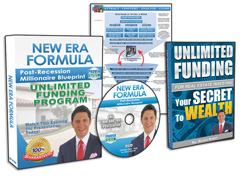
 There are three major components emphasized when choosing an exit strategy:
There are three major components emphasized when choosing an exit strategy:
(1) personal finances
(2) market conditions
(3) deal structure
A real estate investor always starts from an awareness of his or her financial circumstances, knowing the immediate cash needs and what they may be. The perfect example could well be the consideration of a lease option. It may be the most profitable choice but not the best one if immediate cash needs are more pressing. Local real estate conditions always matter. If there is much appreciation in value, a buy and hold with positive cash flow from rentals may mean a delay in selling for a period of time. Deal structure is another consideration. When to sell and how to sell is directly affected by what you paid for the property and finances outstanding. If you pay more for a property, you may be limiting your exit strategies. If you pay 70% of fair market value (FMV) or less, all exit strategies are on the table. Pay 80% FMV, maybe the best exit strategy may be a lease option. Pay 90% or more FMV, you had better hope there is a buyer that absolutely loves the property or you may be underwater when closing the deal.
Now let’s delve deeper into the thought process involved. Appreciating and understanding the most graceful and profitable way to move a property is all about being due diligent and fully aware of all available resources. An investor must have a contingency plan keyed to a well-considered risk management strategy, a plan for the circumstance that must be employed each and every time. The strategy to be employed is all about the method by which an investor intends to cash out of an investment with a plan and a timetable seemingly patterned as a military engagement withdrawal.
An effective exit strategy should be planned for every likely and predictable positive and negative contingency. It is always prudent to anticipate the unexpected. The due diligent do their research. Have a plan of action and a plan to implement it. Never pay too much. Be smart, never greedy. Know when to walk away. Never get emotionally attached, it is business, never personal. Always have a buffer in cash and resources to cover the unexpected. Whatever repair costs you may be calculating after determining the ARV of the subject real estate, always figure in an additional 10% to cover the “what if” that can always occur and often does. Never be complacent. Know when to think “out of the box”. Prepare for the worst. There are always risks, there are always unexpected problems and costs. A great example is never skimping on insurance coverage. Network, network, and network some more. Have a mentor.
The sound way to proceed is to analyze each component separately, then in concert together. Diligently choose the strategy most applicable. Master the art of doing that every time.
Request FREE Funding Kit and Discover How To Legally Bypass Banks And Gain Direct Access To "No-Credit-Required" Funding You Can Use To Achieve Your Financial Freedom... Start Now!












